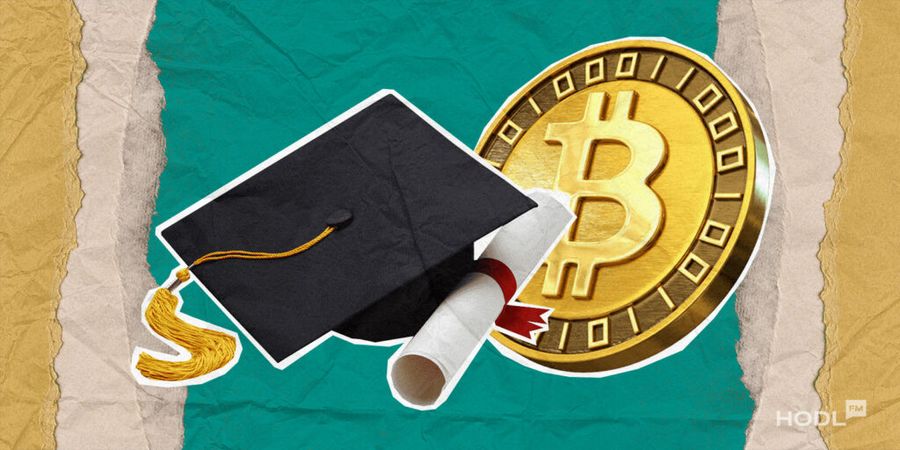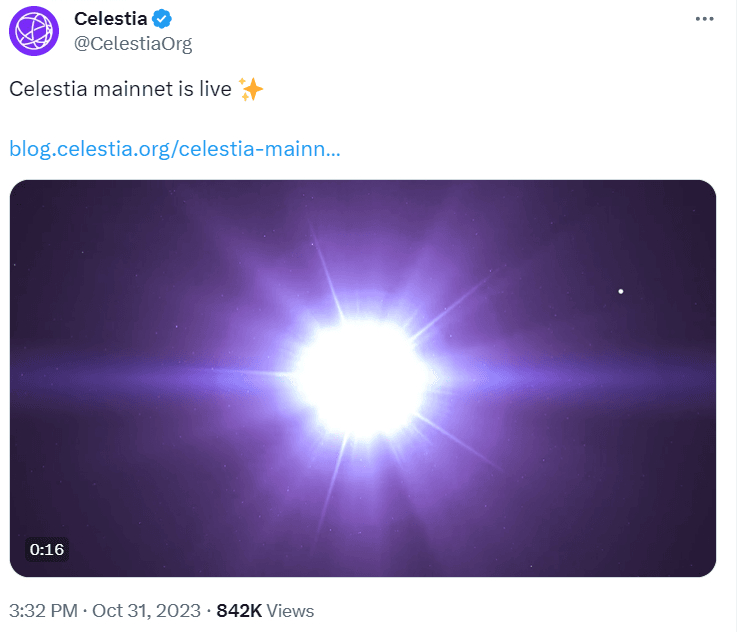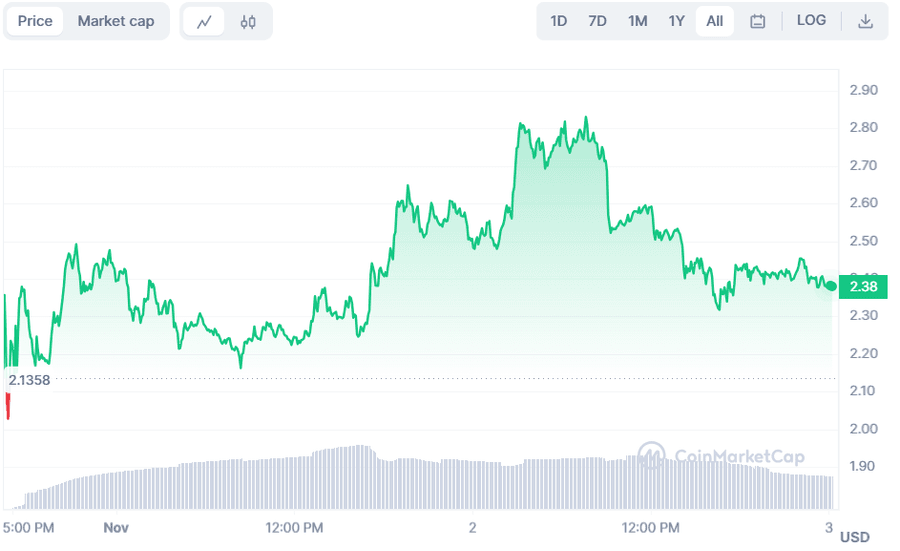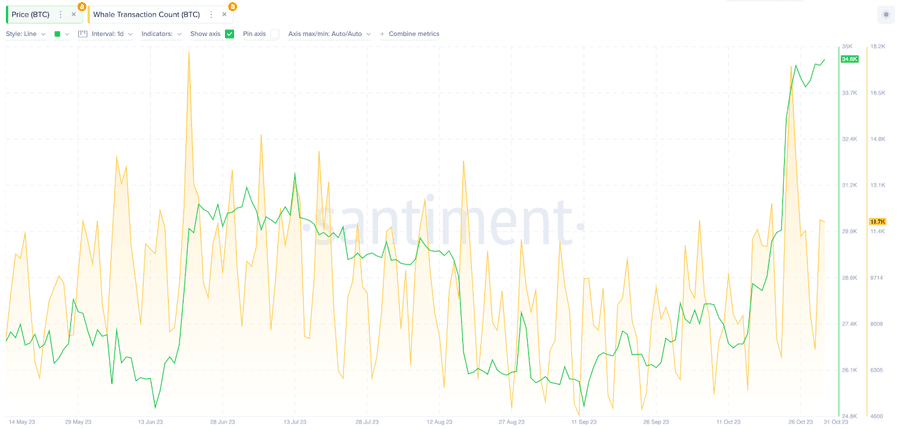Hello, my fellow Hodlers! I know you’ve been eagerly awaiting our roof-raising digest, and the moment has arrived! We’re back with our weekly digest. In this edition, we’ll be talking about a 13-year-old sneaker enthusiast who’s selling kicks for crypto, the AI race between the USA and China, and the remarkable story of a blockchain project turning into a $345 million success overnight. Feeling a bit drowsy? Hang in there; we’ve got more in store! Towards the end, we’ve got something super exciting… Bitcoin hitting 40k real soon! Oh yeah! Are you glued to your screen once again? As expected. And, by the way, we’re not just talking without substance; some very convincing signs are waving those red flags. So, are you ready to dive in?
From Playground to Profit: 13-Year-Old Entrepreneur Trades Sneakers for Bitcoin
To kick things off, let’s start with the story of a 13-year-old genius businessman, Blake Cockram, who managed to combine what millions (if not billions) of people across the globe love with cryptocurrency. And it turned out to be quite simple: his older brother is just a crypto fanatic. So, one day, while Blake and his older brother were having their fifth cup of tea on a misty British day, they suddenly thought:
“Why not start some company and put crypto in the name? And people are going to go crazy for it.”

And they simply did it. This is how CryptoKicks was founded.
But you might wonder why people would buy sneakers somehow connected to crypto. Well, the trick is that there are resellers who buy freshly released, highly sought-after footwear and resell them to eager buyers. CryptoKicks employs the same business model and adds a fresh perspective to Web3—anyone who buys a pair of sneakers with cryptocurrency gets a 10% discount on their order. Not bad, right?
Of course, they also accept cash. You have the choice of payment methods, but those discounts are just too tempting for us bargain hunters. People think:
“Wow, I can get this mysterious crypto and score some fresh Jordans at a discount.”
It’s a win-win.
CryptoKicks accepts BTC, ETH, and stablecoins like Tether (USDT). Surprisingly, most customers buying sneakers with cryptocurrency are blockchain newcomers. According to Blake, only one or two customers over time had prior crypto experience; the rest were complete novices. So, apart from enjoying a pretty sweet discount, Blake’s customers also learn how cryptocurrencies and blockchain work.
Cockram’s story is inspiring and demonstrates that anyone can dive into cryptocurrency and start a business, no matter their age or background. He serves as a role model for young entrepreneurs and crypto enthusiasts alike.
Alibaba Earns Extra Points in the Artificial Intelligence Race Between the U.S. and China
China once again refuses to let American giants in the artificial intelligence field like Microsoft, Amazon, and OpenAI rest on their laurels. On October 31st, Alibaba, the tech giant from Hangzhou, unveiled a new model of a large language model (LLM) called Tongyi Qianwen 2.0 with several hundred billion parameters.
Tongyi Qianwen 2.0 showcases remarkable abilities in comprehending complex instructions, copywriting, reasoning, memorization, and preventing hallucinations. It has been demonstrated to outperform some leading LLMs in tests across various domains, ranging from language understanding to solving arithmetic problems and answering questions.
Alibaba has also launched eight industry-specific artificial intelligence models alongside Tongyi Qianwen 2.0, catering to the entertainment, financial, healthcare, and legal sectors. These models are designed to help companies in these industries apply artificial intelligence technologies to meet their specific needs.
Tongyi Qianwen 2.0 and the industry-specific AI models are available on the GenAI service platform, which allows companies to create their own generative AI applications using their own data.
LoomsWide regulation is stepping on the heels
While you’ve perked up your ears and imagine how soon AI will do all the work for you, President Joe Biden signed the first executive order on artificial intelligence. The order addresses various issues, including the establishment of new AI security standards, consumer privacy protection, the promotion of fairness and civil rights, and the examination of potential AI impacts on the labor market.
Additionally, the G7 countries are working on a “Code of Conduct” for advanced artificial intelligence systems, known as the “Hiroshima AI Process,” intending to promote safe, reliable, and trustworthy artificial intelligence worldwide.
For now, it’s clear that the U.S.-China race in LLM technology is heating up, but Tongyi Qianwen 2.0 is a powerful AI tool with the potential to revolutionize many industries. And to us ordinary folks, all that remains is to patiently wait for when they finally develop that super AI, which will search for that darn TV remote instead of us.
From Zero to $345M: The Meteoric Rise of Celestia in Blockchain

We’ve prepared this news for the true noobs and blockchain nerds. Affectionately called crypto enthusiasts or blockchain developers. No offense, folks, okay? Deep down, we all admire you and want to be as savvy with all those nodes, sharding, and halvings, and other digital blockchain stuff (or not).
So… once upon a time, a computer science student, Mustafa Al-Bassam, at the University College London (well, yet another genius from the UK!) published an article in 2019 titled “LazyLedger.” On Tuesday, 31 October, the official Celestia account tweeted the following:

So, what exactly is this new reality for the blockchain? Rumor has it that even Vitalik Buterin himself praises this technology. Let’s figure it out.
Celestia is like a special network that can grow and become bigger or smaller depending on how many people use it. It makes it easy for anyone to start their blockchain.
Celestia differs from other blockchains in that it separates the consensus layer from the execution layer. This means that Celestia is only responsible for ensuring data availability on the network, but does not execute any smart contracts or other applications. This allows Celestia to scale to a much higher number of transactions per second than other blockchains while maintaining security and decentralization.
The Most Successful Airdrop of the Year and Buterin’s Recognition
It turns out that Al-Bassam, the founder of Celestia, has had a long-standing connection with Ethereum’s founder, Vitalik Buterin, and has even co-authored three scientific books with him. Earlier this year, Buterin promoted Celestia as a scaling solution for Ethereum.
Related news: Vitalik Buterin Transfers 400 ETH Valued at $600000 to Coinbase
In addition to the technological potential that Celestia could bring to the blockchain world, it has made quite a splash among investors. The airdrop garnered such high expectations that the most cunning traders engaged in price speculation, utilizing futures contracts before the launch.
The coin has already been listed on many major exchanges, including Binance, Kucoin, Coinbase, Kraken, and others, according to CoinMarketCap data. The coin’s price fluctuates around $2.30 – $2.40.

Ultimately, if Al-Bassam’s vision comes to life, everyday cryptocurrency users might interact with Celestia without even realizing it. Of course, we’re not talking about you, crypto enthusiasts and blockchain developers; you already know it all.
The $40,000 Question: Bitcoin’s Next Move
Well, here we are, at the main news of the week! In all the Monte Carlo casinos, no one’s betting on red or black anymore; everyone’s going all-in on Bitcoin at $40,000. So, where does this confidence come from? It’s time to lay the cards on the table and reveal the four aces we’ve had up our sleeves.
- Fed Rate Announcement
The first reason is the interest rate of the U.S. Federal Reserve. The Federal Open Market Committee (FOMC) recently had a two-day meeting, and they decided not to raise the interest rates. They figured this would have a positive impact on the economy and therefore kept rates at 5.25–5.5%. That’s the highest it’s been in 22 years – talk about an all-time high!
Now, here’s where it gets interesting, and you might be thinking, “What’s this got to do with Bitcoin?” Great question! When the Fed cranks up those interest rates, they’re trying to keep inflation in check and, in the process, can make people less giddy about investing in risky assets like Bitcoin. But when they ease up on those rates or just keep things chill during times of low inflation, it’s like they’re throwing a Bitcoin party, and people start throwing their money at it. Historical data have repeatedly shown that this has positive long-term consequences for Bitcoin prices.
- Whales and High-Net-Worth Investors Buying Bitcoin
The next reason is the whales. Not the marine mammals or the blue ones, but those with fat Bitcoin wallets that have become noticeably more active over the past week. Corporations and wealthy investors are actively buying Bitcoin in anticipation of favorable conditions.

According to Whale Transaction Count data, the number of transactions involving whales or large transactions exceeding $100,000 has increased. And what could this be if not a bull indicator, signaling high demand from corporations and affluent individuals? This indicates that institutional interest in Bitcoin is growing, which could potentially lead to a cryptocurrency price increase.
- Positive Sentiments Among Bitcoin Holders
79% of Bitcoin holders are in profitable positions, indicating exclusively positive sentiments in the cryptocurrency ecosystem. Such bullish sentiments among existing Bitcoin holders can contribute to increased demand and, as a result, price growth. The announcement of the Federal Reserve’s rate pause enhances this bullish momentum and is considered one of the factors that could push the Bitcoin price closer to the $40,000 mark.
- Support and Resistance Levels
The price level of $35,100 is a significant obstacle preventing Bitcoin from reaching $40,000. A large number of addresses, precisely 3.16 million, acquired 1.17 million Bitcoins at or around this price. If these holders decide to sell their positions, it could lead to a negative price correction.

On the other hand, there is strong support around the price level of $33,500, with 1.06 million addresses having purchased 513,580 Bitcoins at this price. If these holders continue to “HODL,” they can prevent a significant price reversal. May the crypto gods protect their holdings!

In conclusion
Here we are, coming to the end of our exciting digest. Hope this week’s news stirred up the same emotions in you as it did in us. To be more specific, a mix of amazement and, let’s be honest, a tad bit of envy – especially when it comes to that 13-year-old entrepreneur. We’ve all secretly hoped that the development of artificial intelligence would shift from competition to collaboration for our collective happiness. Frankly, we’d prefer to work a little less and let AI do a bit more, and don’t deny it, you know it’s true.
Don’t miss our next weekly digest, where we’ll keep an eye on the most interesting and relevant events in the world of cryptocurrencies. See you real soon!



